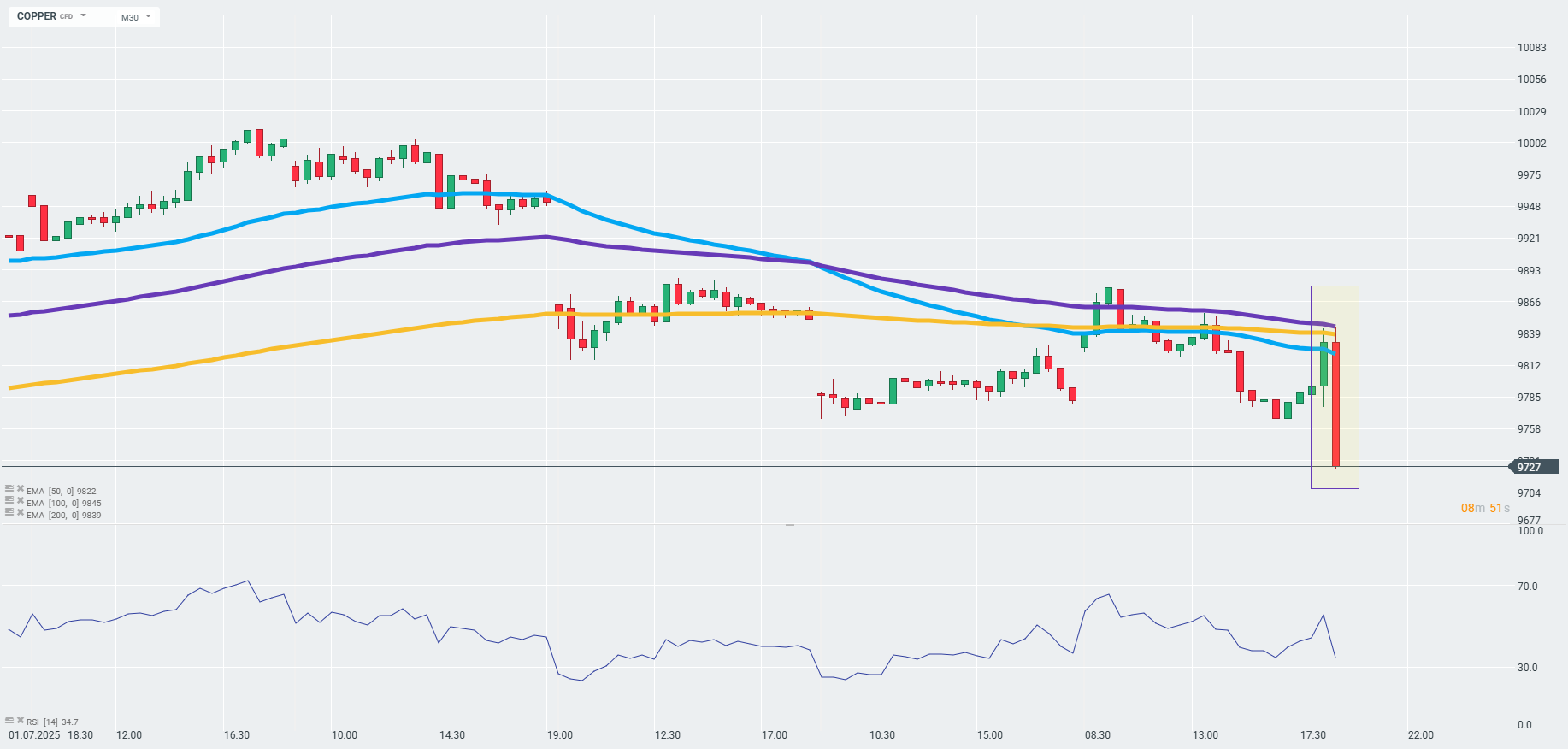President Trump's announcement of a 50% tariff on all copper imports sent shockwaves through the commodities market, and copper prices on the US COMEX exchange rose immediately after the announcement by as much as 17% (while prices in London (COPPER listing dependent on this exchange) remain largely unchanged.
The difference in price behavior is due to local market conditions. On COMEX, copper prices are rising sharply because US buyers want to get their deliveries in before the 50% tariffs are introduced and are buying up contracts en masse. Meanwhile, prices on the LME remain stable because the raw material that will not go to the US increases supply on global markets, which limits the pressure on prices in London to rise.

Price contracts on COMEX. Source: Bloomberg Financial LP
The president also threatened to impose a 200% tariff on pharmaceutical products, giving companies one to one and a half years to comply, and announced further measures concerning semiconductors and other sectors. In addition, Trump criticized wind and solar energy, calling them bad investments and promising that the United States would move away from these technologies.
The copper tariff, if implemented, would be one of the most aggressive trade measures, likely raising costs for US manufacturers dependent on imported copper and potentially driving inflation in sectors such as construction, electronics, and renewable energy. The market reaction highlights concerns about supply disruptions and higher production costs, as the United States is a significant net importer of copper. Threats to the pharmaceutical and semiconductor sectors are causing additional uncertainty for global supply chains, and Trump's rhetoric on renewable energy sources could dampen investment sentiment in green energy sectors.
Key takeaways:
- The price of copper on the COMEX exchange rose 17% after Trump announced a 50% import tariff. In London, however, prices remain largely unchanged.
- The copper supply chain in the United States faces serious cost and supply risks, which could cause inflation in the downstream market.
- The pharmaceutical and semiconductor sectors are also at risk of high tariffs, adding to global market uncertainty.
- Trump's strong opposition to wind and solar energy signals a departure from the policy of supporting renewable energy sources, which may affect investments in clean energy.
- Markets are preparing for increased trade tensions and volatility due to the administration's aggressive protectionist measures (as a result, EURUSD continues to rise).

COPPER prices are falling, despite significant gains in the US. Source: xStation
Breaking: crude oil inventories above expectations 📌
BREAKING: NATGAS declines after EIA data 📌
Stock of the Week - Lam Research Corp (16.10.2025)
Salesforce surges 8% amid positive long-term revenue forecast📈


